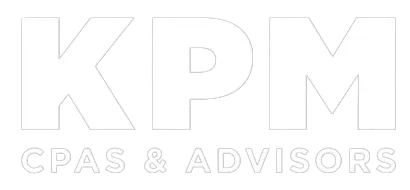Generally, when reviewing their income statements, business owners tend to focus on profits (or losses). However, focusing solely on the bottom line can lead to mismanagement and missed opportunities. Instead, organizations should analyze this financial report from top to bottom for deeper insights.
Think Like An Auditor
Review your organization’s income statement with an auditor’s mindset. External auditors are trained to have professional skepticism, ask questions continually, and evaluate evidence without bias. They pay close attention to details and rely on data to identify risks and formulate evidence-based conclusions.
This approach can improve your knowledge of your organization’s financial health and help you make more strategic decisions based on the key drivers of profitability — revenue and expenses. It can also help expose fraud and waste before they spiral out of control.
Start With Revenue
Revenue (or sales) is the money generated from selling goods or services before any expenses are deducted. It’s the top line of your income statement.
Compare revenue for the current accounting period to the previous period and your budget. Has revenue grown, declined, or held steady? Did your organization meet the sales goals you set at the beginning of the year? If not, investigate what happened. Perhaps management’s goals were unrealistic. Alternatively, the cause might relate to internal issues (such as the loss of a key salesperson or production delays) or external issues (such as the emergence of a new competitor or weak customer demand). Pinpointing the reasons behind lackluster sales is critical. View internal mistakes as opportunities to learn and improve performance in the future.
Evaluating revenue can be particularly challenging for cyclical or seasonal organizations. These organizations should compare results for one time period to those from the same period the previous year. Or they may need to look back more than just one year to evaluate revenue trends over an entire business cycle.
It also may be helpful to look at industry trends to gauge your organization’s performance. If your industry is growing but your organization is faltering, the cause is likely internal.
If your organization offers more than one type of product or service, break down the composition of revenue to see what’s selling — and what’s not. Variances in sales composition over time may reveal changes in customer demand. This analysis can lead to modifications in marketing, sales, production, and purchasing strategies.
Move On To Cost Of Sales
The next line item on your organization’s income statement is the cost of sales (or cost of goods sold). It includes direct labor, direct materials, and overhead. These are costs incurred to make products and provide services. The difference between revenue and cost of sales is your gross profit.
Look at how the components of cost of sales have changed as a percentage of revenue over time. The relationship between revenue and direct costs generally should be stable. Changes may relate to the cost of inputs or your organization’s operations. For example, hourly wages might have increased over time due to inflation or regulatory changes. You might decide to counter increasing labor costs by purchasing automation equipment that makes your organization less reliant on human capital or adding a shift to reduce overtime wages.
Changes in your revenue base can also affect cost of sales. For instance, if your organization is doing more custom work than before, the components of direct costs as a percentage of revenue will likely differ from past results. Evaluating gross profit on a product or job basis can help you understand what’s most profitable so you can pivot to sell more high-margin items.
It’s also helpful to compare the components of your organization’s cost of sales against industry benchmarks. This can help evaluate whether you’re operating as efficiently as possible. For instance, compute your organization’s direct materials as a percentage of total revenue. If your ratio is significantly higher than the industry average, you might need to negotiate lower prices with suppliers or take steps to reduce waste and rework.
Monitor Operating Expenses
Operating expenses are ongoing costs related to running your organization’s day-to-day operations. They’re necessary for a company to generate revenue but aren’t directly tied to producing goods or services. Examples of operating expenses include:
- Compensation for managers, salespeople, and administrative staff
- Rent
- Insurance
- Office supplies
- Facilities maintenance and utilities
- Advertising and marketing
- Professional fees
- Travel and entertainment
- Depreciation and amortization
Many operating expenses are fixed over the short run. That is, they aren’t affected by changes in revenue. For instance, rent and the marketing director’s salary usually don’t vary based on revenue. Compare the total amount spent on fixed costs in the current accounting period to the amount spent in the previous period. Auditors review individual operating expenses line by line and inquire about any change that’s, say, greater than $10,000 or 10% of the cost from the prior period. This approach can help you ask targeted questions to find the root causes of significant cost increases and make improvements.
For example, let’s say your organization’s maintenance costs increased by 20% this year. After further investigation, you might discover that you incurred significant, nonrecurring charges to clean up and repair damages from a major storm, or maybe you discover that your payables clerk is colluding with a friend who works at the landscaping company to defraud your organization for excessive fees. You won’t know the reason for a cost increase without digging into the details like an auditor would.
Use The Income Statement As A Management Tool
Your organization’s income statement contains valuable information if you take the time to review it thoroughly. Adopting an auditor’s mindset can help business owners identify trends quickly, detect problems and anomalies early, and make better-informed decisions. Contact us for help interpreting your organization’s historical results and using them to improve its future performance.

